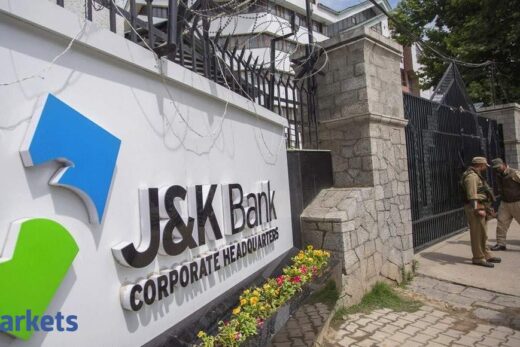Why is there so much frenzy in the mid and the smallcap space when the economic fundamentals are looking slightly shaky because of the second wave?
Most of the time, we see that a class of players are basically looking at the large cap companies which includes the larger part of allocation of Indian mutual funds and also the ETFs which typically concentrate on the largecap companies. The largecap companies have had a spectacular run last year.
On the other side, the domestic investors — the PMSes, some of the AIFs which are operating in the listed markets and the HNIs — are typically looking at opportunities in the mid and small sized companies. They are comfortable with the limited market cap. However, their weight would be extremely heavy when they deploy a significant amount of funds into these stocks. At the same time FOMO (the fear of missing out) is driving traders to jump into this particular trade leading to very rich valuation. I am not against the midcap and smallcap stocks. Some of them are probably valued just because of the sheer liquidity factor and a demand pull which is coming into the market. One will have to be extremely selective while including some of those midcaps and small caps into their portfolio and ensure that the exposure is comfortable enough to allow an exit at a given point of time.
What are you buying? Is it time to go against the crowd and raise cash in the mid and the small cap space?
The mandate is clear that those companies which are weak in fundamentals and which probably like the bandwidth and are more vulnerable to the situation like high costs in the economy and the input cost plus of those companies with sizably large segment of customers who could possibly not allow them to increase their prices, are among the most vulnerable companies. So the direction is very clear that as and when you get an opportunity to get out of those companies, do it and probably stay in cash for some time. Also keep investing into the companies where the business is looking larger and bigger going forward.
For example, we believe that automobiles particularly are currently not in favour but maybe with expected good monsoon and demand recovery as the healthcare economy is improving with more vaccination down the road, auto and auto ancillary sector is looking a better choice from the second half point of view. Currently they are available at better valuations.
Similarly, life insurance businesses where the amount of premiums have started increasing because of the protection factor are again available at a reasonably good valuation. One could buy these stocks on dips.
In IT, one should own the digital space. IT is available at relatively cheaper valuation along with some select pharma. So yes, selective ideas within this basket are something which we consider in this market.
earnings were pretty much in line. Your view.
There are a couple of things. One, their African operation has been generating a good amount of cash flow. Of course, something which is basically about monetisation we keep aside because it is a regular factor. But the operations are contributing a good amount of cash flow which is fundamentally important as their India operation needs more cash inputs. In Africa, they are generating surplus cash flow and Africa is 30% of the overall consolidated revenue of Bharti Airtel. So from that perspective, it is very significant.
Secondly, 10% of Bharti Airtel’s valuation belongs to Africa but it contributes around 30% of the consolidated revenue. In my view, if there is a possibility of improvement in the stock price, it could come from that region and soon the company probably may want to monetise their stake in Africa. It could possibly add to this trend that the standalone balance sheet in India could require more because of the new airwaves which they have acquired and at the same time, 5G implementation would probably require more cash flow.
All in all, they are relatively better off. They are breathing well. A lot will have to be seen as to how they generate additional revenue streams and from their India operation under the capex mode. That is one area which will keep the stock prices a little bit under check but otherwise African operation is the key factor.
But why are Bharti ARPUs not improving?
India operations definitely remains a challenge for the company. They require a significantly higher amount of money. If the company has to move from being a mobile company to a digital company, then in such a situation, a lot of corrective strategies will have to come into play, including the infrastructure which is required to run a digital operation. Fortunately,, the company has started merging some of the businesses which they have been keeping outside the company till now. This could give them a little better handle to operate.
However, having said that, the new 5G spectrum buying along with the 4G spectrum that they bought and the liability from the Supreme Court judgement — all together is making it very clear that the next two, three years is going to see significant capex by Bharti. That will mean an increase in debt and that is where people will not be very comfortable with the company.
In this case, Jio would be better because they are moving with a couple of strategies; on one side mobility definitely is strong and at the same time fibre to home under the digital strategy is working well. Fibre to enterprise along with separate vertical focus and the banking connectivity shows Jio is probably moving faster on the digital model compared to Bharti. So the preference would definitely be on Jio because they have completed the larger part of the capex programme which Bharti would take another two, three years to complete.



